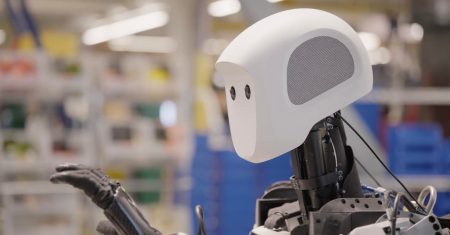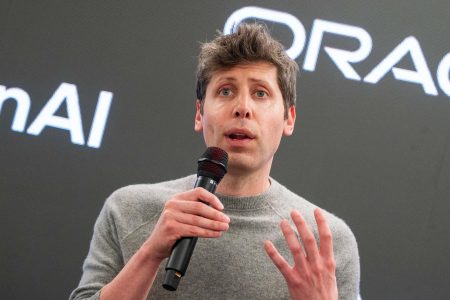Concrete and steel are the two biggest industrial products that aren’t fossil fuels, and have a massive climate footprint. They are used together in reinforced concrete, the structural solution that enables modern bridges and buildings to span enormous distances and soar to unprecedented heights. Other industrial processes require decarbonization as well.
Concrete, more specifically the cement that is the gray glue that binds it together, has big greenhouse gas emissions in its manufacturing, about 0.6 tons of carbon dioxide per ton of cement. That turns into a little under 0.2 tons of carbon dioxide per ton of concrete.
Making cement has a few steps. Limestone is mined and crushed. It’s put into a limestone kiln and heated several hundred degrees, usually by fossil fuels. The heat turns the limestone into quicklime, but that’s by releasing carbon from it which binds with oxygen from the air to make carbon dioxide. The quicklime is put into the big rotating drum of a cement kiln with clay and heated with a large jet of burning gas. That makes clinker pellets which are crushed into powdered cement.
Manufacturing cement accounts for about 8% of global carbon dioxide emissions, more than all of global aviation, marine shipping or the manufacturing of hydrogen.
About 40% of the greenhouse gas emissions are from the fossil fuels used in the normal cement process. That’s mostly a solvable and solved problem with electric heating instead of gas. There are electrified cement kilns today.
But 60% is from the carbon dioxide baking off the limestone. That’s a harder problem to solve. There are alternatives in varying degrees of commercialization, but all of them are more expensive. That’s why this is one of the few areas where carbon capture and sequestration might make sense, because the additional cost is competing with more expensive alternatives. Pricing carbon will help this.
We overuse concrete today because it’s so cheap, much cheaper than the liability of collapsing buildings. One of the easiest ways to reduce concrete’s global emissions is to build to engineering requirements, not overbuild. Sometimes two or three times as much concrete as is required for structural soundness is used. As carbon is priced and cement becomes more expensive as a result, more efficient use and low-carbon alternatives will be used.
A specific challenge with concrete is that it’s in building codes which can be hyper-local. Often those codes are very specific about the composition of the concrete and cement, so alternatives are very difficult or even impossible to use. This is one of many areas where the patchwork of regulations hinders rapid climate progress.
Steel is a greenhouse gas emissions problem at around the same 8% level as concrete. A great deal of that steel is inside of reinforced concrete in the form of rebar rods which provide structural strength and keep concrete from cracking.
Manufacturing steel is done a few ways today. Iron ore is changed chemically into iron using coal in blast and open-hearth furnaces. Then the iron is made into steel with more coal. That’s a very high emissions process, understandably.
However, we are already making about 100 million tons of steel a year using direct reduction of iron processes. That uses synthetic gases currently made from natural gas or coal gas instead of coal. The synthetic gases can be replaced with biologically sourced gases up to a point, and the heat required for the process can be electric. Midrex, a major steel manufacturing equipment provider, already does most of this.
We are already using a lot of scrap steel. The USA has been getting about 70% of its steel demand from scrap put through electric arc furnaces for a couple of decades. While current processes often use fossil fuels for heating in addition to the electric arcs, the entire process can be fully electric and run off low-carbon electricity.
We also have successful demonstrations and limited commercialization of using green hydrogen or electricity directly to make new iron from iron ore, replacing the coal and gas processes entirely. HYBRIT in northern Europe, Fortescue in Australia and Boston Metals in the USA all have solutions for new green iron.
My projection is that steel demand will be flattening in the coming decades with China having completed its major industrialization and urbanization sprints, India and Africa seeing slower growth, and global population growth stopping between 2050 and 2070. We’ll pivot to much more scrapping of existing steel and low-carbon steel manufacturing processes for the remaining new steel requirement.
Both cement and steel can and will be decarbonized. It’s just a matter of ensuring that the negative externalities of greenhouse gases are included in their costs so that the solutions pencil out. Europe’s 2026 carbon border adjustment mechanism will help with this as it’s effectively a carbon price on everything entering the third biggest economy in the world.
There are other industrial sectors that require decarbonization too. Baking soda comes with about three boxes of carbon dioxide by mass for every box of the white powder we use in so many things, including toothpaste, laundry soaps and baked goods. The Solvay process has been a major source of greenhouse gases and toxic industrial waste since the late 19th Century. Electrochemistry can produce baking soda while using excess carbon dioxide emissions, something that Agora Energy Technologies has demonstrated.
There are no insurmountable technical barriers to decarbonizing major industrial emitters, just the will to spend the money and make the changes. That’s why fixing steel, cement and other industrial processes is on the short list of climate actions that will work.
As a reminder, here’s the short list:
- Electrify everything
- Overbuild renewable generation
- Build continent-scale electrical grids and markets
- Build pumped hydro and other storage
- Plant a lot of trees
- Change agricultural practices
- Fix concrete, steel and industrial processes
- Price carbon aggressively
- Shut down coal and gas generation aggressively
- Stop financing and subsidies for fossil fuel
- Eliminate HFCs in refrigeration
- Ignore distractions
- Pay attention to motivations
Read the full article here










